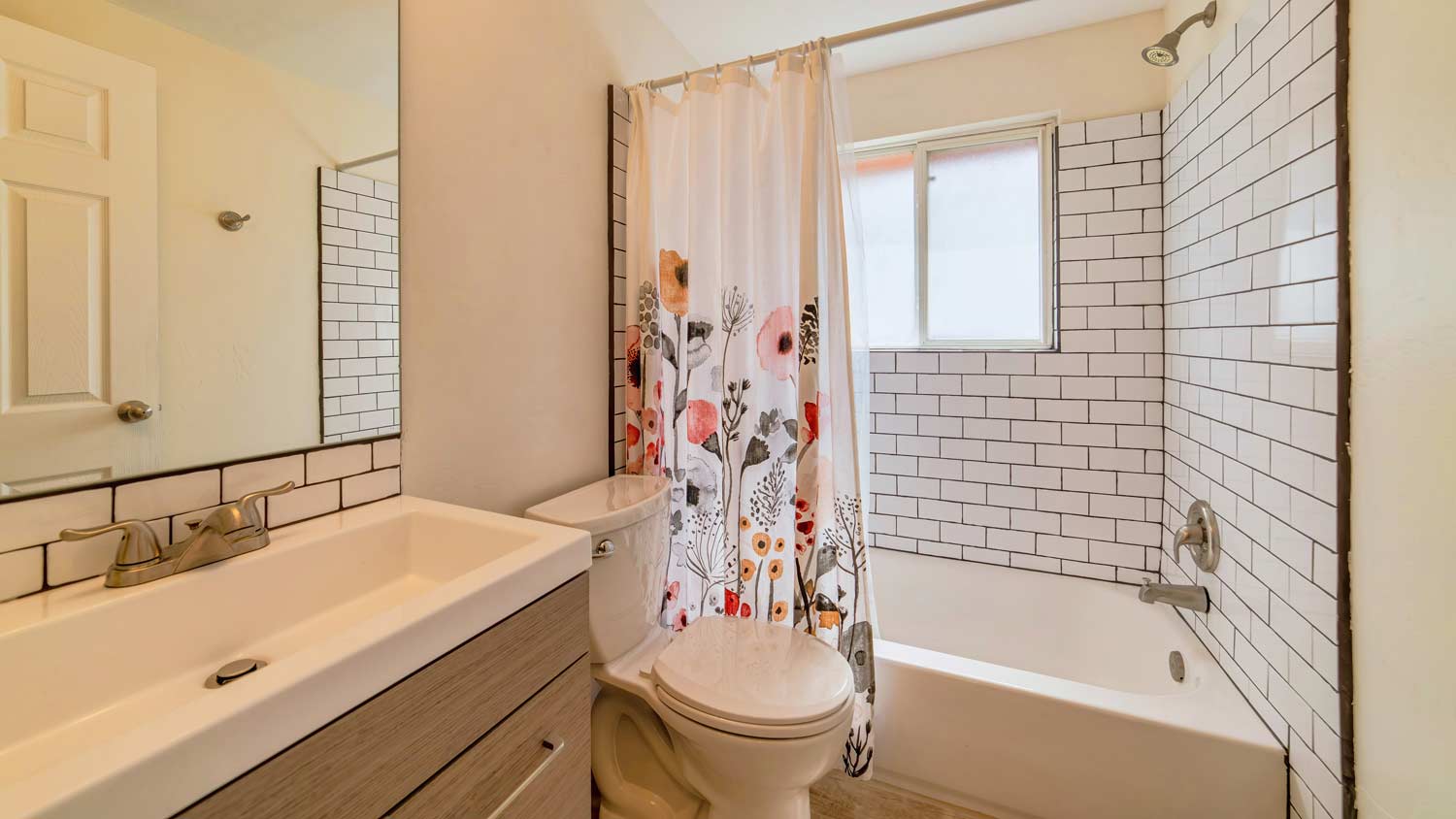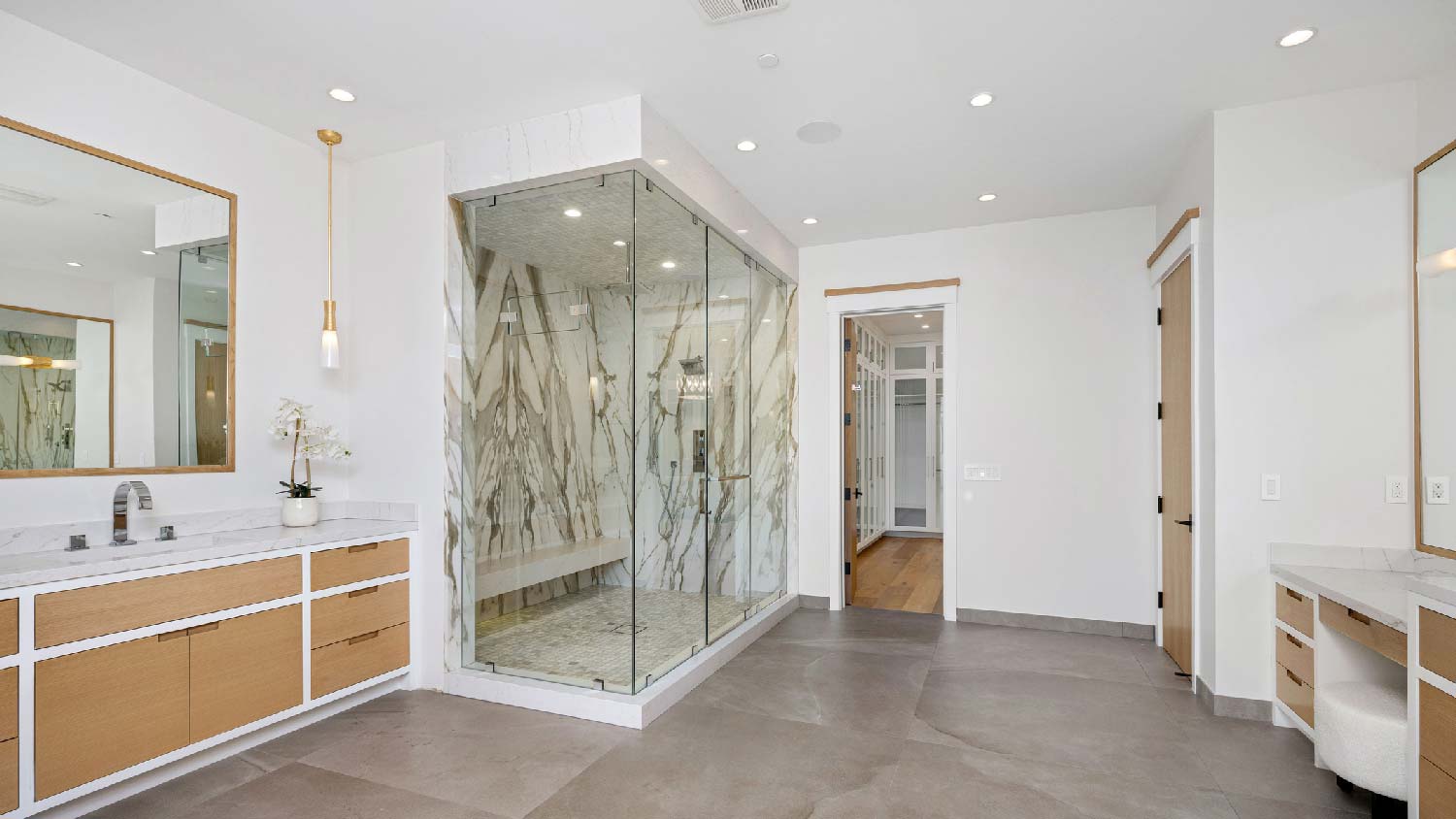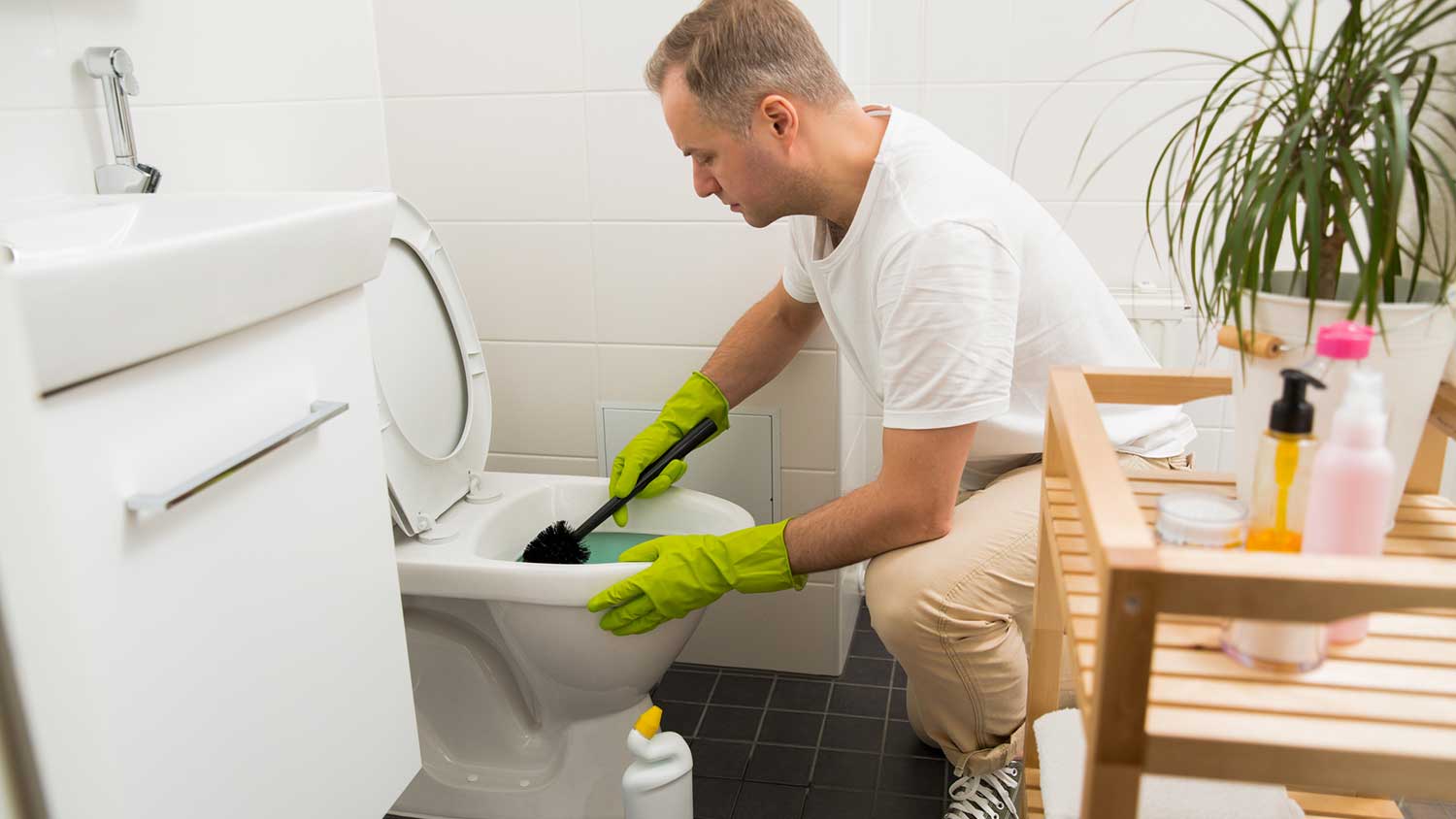How to Prevent Mold in the Shower and the Rest of Your Bathroom
Bathrooms are the perfect breeding grounds for mold and mildew


Molds love damp, humid, and wet environments, so bathrooms are one place where they can thrive. Not only is mold hazardous to your health, but it can cause serious structural damage in your home. Every shower, soak in the tub, and hand washing releases water droplets into the air and encourages mold growth.
Luckily, by taking a few steps, you can learn how to get rid of mold in your shower and remove mold in your bathroom with ease.
What Causes Black Mold in Showers and Bathrooms?
Your bathroom is the dampest and most humid area in your home, so it provides the ideal environment for mold growth. Chronic moisture in the bathtub and shower, steam from hot water, splashes from hand-washing, and plumbing leaks can all cause black mold growth in the bathroom.
Just a note that not all mold in your bathroom is black mold. This specific type of mold is usually present in severe cases, like after floods or in areas with chronic and persistent moisture (like with the plumbing leaks we just mentioned). If you have any concerns about the type of mold in your bathroom, be sure to contact a pro.
The terms “mold,” and “black mold" are commonly used interchangeably, but there is a difference. Black mold is a specific type of mold. It’s typically black in color, but it can be green. And, unlike some types of mold, black mold is toxic.
How Dangerous Is Mold in the Shower and Bathroom?
Mold in the shower and bathroom can cause a number of adverse health effects.
According to the Centers for Disease Control and Prevention, mold exposure can cause burning eyes, skin rashes, or respiratory symptoms such as stuffy nose, sore throat, coughing, or wheezing. These issues can be especially dangerous for people who have asthma or are allergic to mold. Along with that, those with compromised immune systems or who have chronic lung disease may get lung infections from prolonged mold exposure.
If left untreated, mold can spread to other parts of your home, like the walls, flooring, and HVAC, making it harder to remove and potentially decrease the value of your home.
Tips for Preventing Mold in the Bathroom

Luckily, there are several steps you can take to lower the humidity level in your bathroom and prevent mold from cropping up. These tips can save you thousands of dollars on mold removal while keeping yourself, your home, and your family safe.
1. Waterproof and Seal Grout
Grout is the mixture of cement and sand that fills the lines between the tiles in your bathroom and secures them together. You can waterproof your shower tile to stop moisture from leaking into the walls or subfloor.
Cracked or chipped grout not only looks unattractive, but can also lead to moisture leaks and damage to the subfloor or drywall behind your tiles. If you’re an experienced DIYer who isn't afraid to get their hands dirty, you can fix cracked grout yourself. Otherwise, hiring a grout repair person is always an option.
2. Switch to Liquid Soap
Bar soap gets wet and scummy after using it, and the water collecting underneath it creates the perfect spot for mold growth. Ditch your bar soap to keep your sink high and dry.
If you’re not ready to give up your favorite bar soap, you still have options. Use an elevated soap dish with drainage holes, so your bar soap will dry out between uses.
3. Run the Fan During and After Showering
Taking a long, steamy shower is luxurious, refreshing, and comforting. While steam is great for clearing your sinuses and opening pores, it has some downsides. If your shower isn’t enclosed, like a steam shower or steam room, steam can accumulate and condense onto other surfaces. If you’ve ever hopped out of the shower to find your bathroom mirror fogged over, you’ve seen this firsthand.
A bathroom fan or vent sucks up steam and increases air circulation to deter moisture and condensation from forming. Always run your fan during a shower and leave it on for at least half an hour afterward.
4. Open Doors and Windows After Showering
Ventilation is crucial to keeping moisture under control. Open your bathroom’s windows or doors (if possible) after a steamy shower to release moist air trapped in the bathroom. If you don’t have a bathroom fan, this is even more essential for combating moisture.
5. Insulate the Walls
The right insulation in your bathroom can prevent mold and rot by controlling temperature and reducing condensation. If your bathroom isn’t insulated and you’re constantly struggling with mold or mildew issues, an insulation company near you can insulate the walls. Choose a mold-resistant, quick-drying insulation material, like fiberglass, to keep your bathroom dry.
6. Squeegee Regularly
Most home improvement retailers sell shower squeegees. Keep one in your bathroom as a reminder to squeegee your shower door and walls after each shower. It may feel trivial, but taking a minute to squeegee your shower will significantly reduce the moisture in your bathroom.
7. Wash Towels, Mats, and Shower Curtains
When you step out of the shower sopping wet, your towels and bath mats absorb almost all of the water. As a result, they can harbor moisture-loving mold and mildew. Wash and dry them regularly to keep mold and mildew from growing rampant.
Your shower curtain is another moist surface where mold can grow, so throw that in the wash once a week for good measure.
8. Run a Dehumidifier
If your bathroom fan isn’t cutting it, you can lower the humidity with a bathroom dehumidifier. Dehumidifiers restrict mold growth by lowering moisture levels. If you already have a standalone dehumidifier, just wheel it into the bathroom after a long shower. If you live in a humid area, you can purchase a whole-house dehumidifier for an average cost of $1,300 to $2,800.
9. Repair Leaks
While your shower is the most likely culprit behind bathroom mold growth, leaks can also be part of the problem. A leaky sink, tub, or roof can cause moisture to accumulate and encourage mold to grow.
Repair leaks as soon as you notice them. You can DIY small leaks if you’re handy, but mistakes can lead to even bigger leaks and damage to your plumbing system. When in doubt, hire a local plumber for repairs.
How to Clean Mold in Shower and Bathroom
The EPA recommends DIY mold removal only if the affected area covers 10 square feet or less. For larger mold problems or black mold, always consult a local mold remediation service to safely get rid of the mold.
However, if you’re working with a smaller area, you can try a few DIY methods for mold removal in your bathroom.
1. Ventilate the Area
Turn on the bathroom fan and open a window if possible.
2. Put on Protective Gear
Don rubber gloves and protective goggles. Consider using an N95 respirator to protect yourself from breathing in airborne spores. Do not touch any moldy surfaces with your bare hands.
3. Scrub Hard Surfaces With Vinegar or Soap and Water
Use a stiff-bristled brush to scrub countertops, tile, and other hard surfaces with a detergent (such as dish soap) and water. You can also spray the area with undiluted white vinegar or other natural mold killers. Wait 10 to 15 minutes, then scrub the area clean. Repeat as needed.
4. Dispose of Porous Items
Unfortunately, some items are not salvageable after a mold problem. You won’t be able to clean porous items deeply enough to eliminate the spores. Dispose of rugs, ceiling tiles, and other soft surfaces and consider this a change to start fresh.
5. Thoroughly Dry the Area
Once the mold is scrubbed away, use a towel (or paper towel) to soak up any lingering moisture.
Hiring a Pro vs. DIY
If you have a mild case of mold, but attempts to clean it yourself have been unsuccessful, try hiring a professional house cleaner to take care of it. It’s important to remember to follow the prevention tips above to keep mold and mildew from recurring.
If multiple cleaning attempts doesn’t solve is and you’re noticing the mold is only coming back in larger quantities, you may have a deeper issue and should call a mold remediation specialist.
Frequently Asked Questions
While mold in the bathroom can appear black, it isn’t always the dangerous black mold strain Stachybotrys chartarum. This type of mold typically appears after a flood or a long-term leak. If you suspect black mold, you should get it tested by a local mold testing service to determine whether it’s safe to remove yourself.
Bleach is a biocide that can kill mold, but only on hard surfaces. You’ll need to replace ceiling tiles, insulation, rugs, and other porous surfaces instead.
No—there are key things that help you determine if it’s mold versus mildew. Mildew is a specific type of mold. Both can trigger allergies, asthma, and respiratory symptoms, though mold is typically more severe than mildew.
















